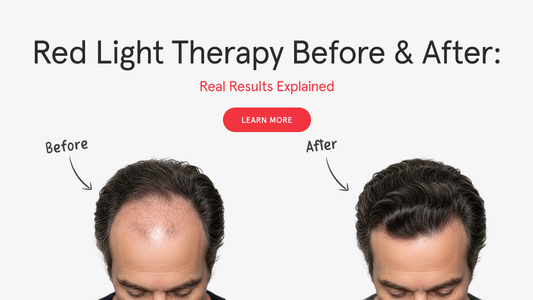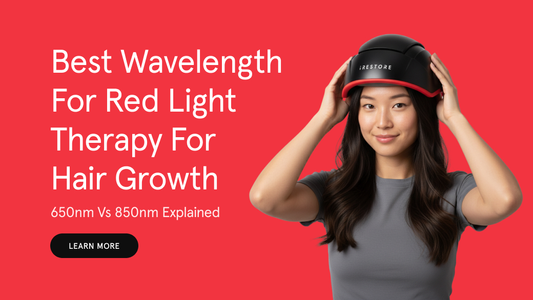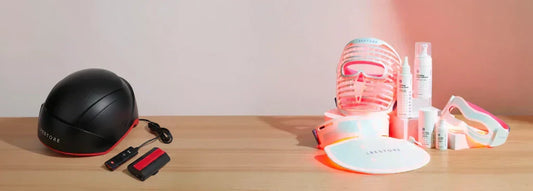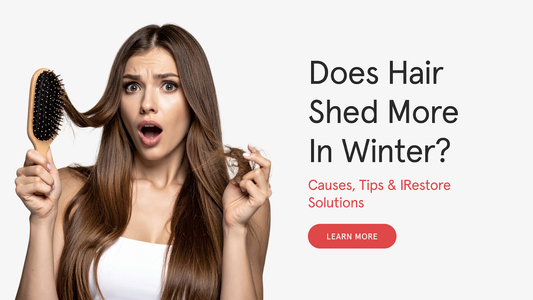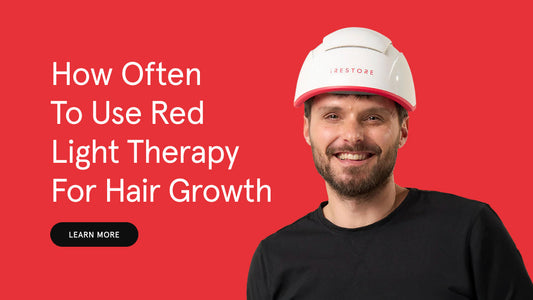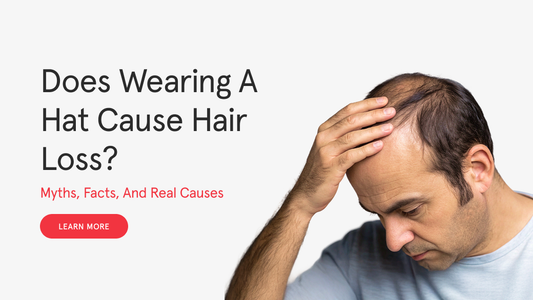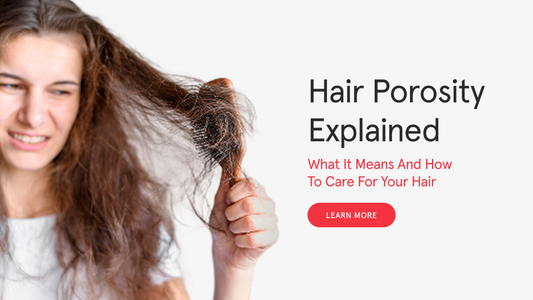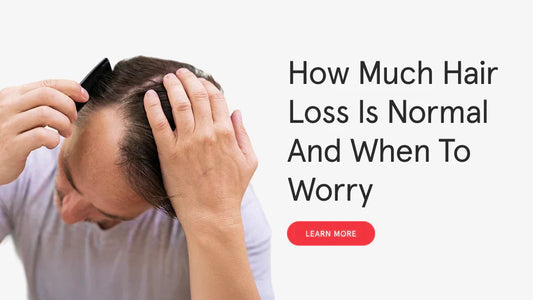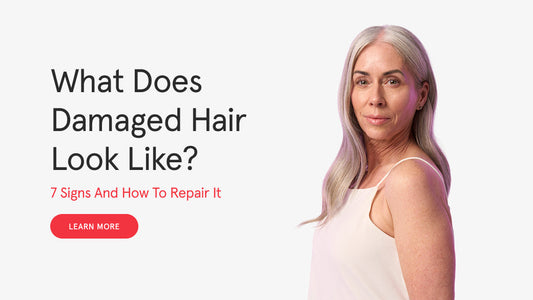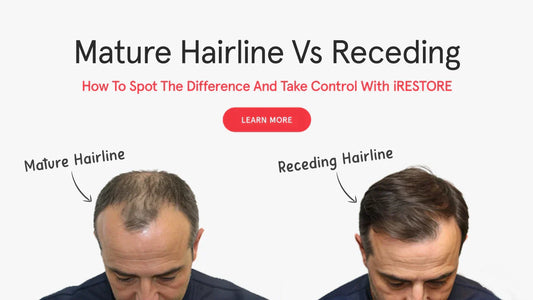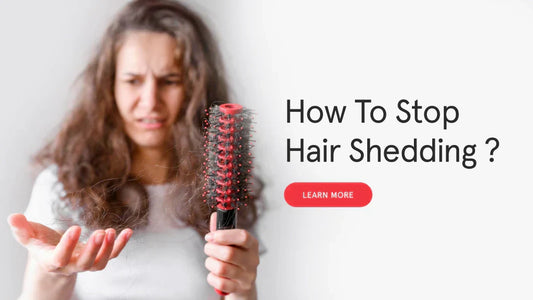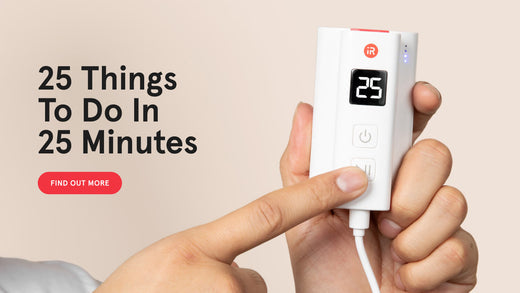The iRESTORE Blog
Confidence Starts Here
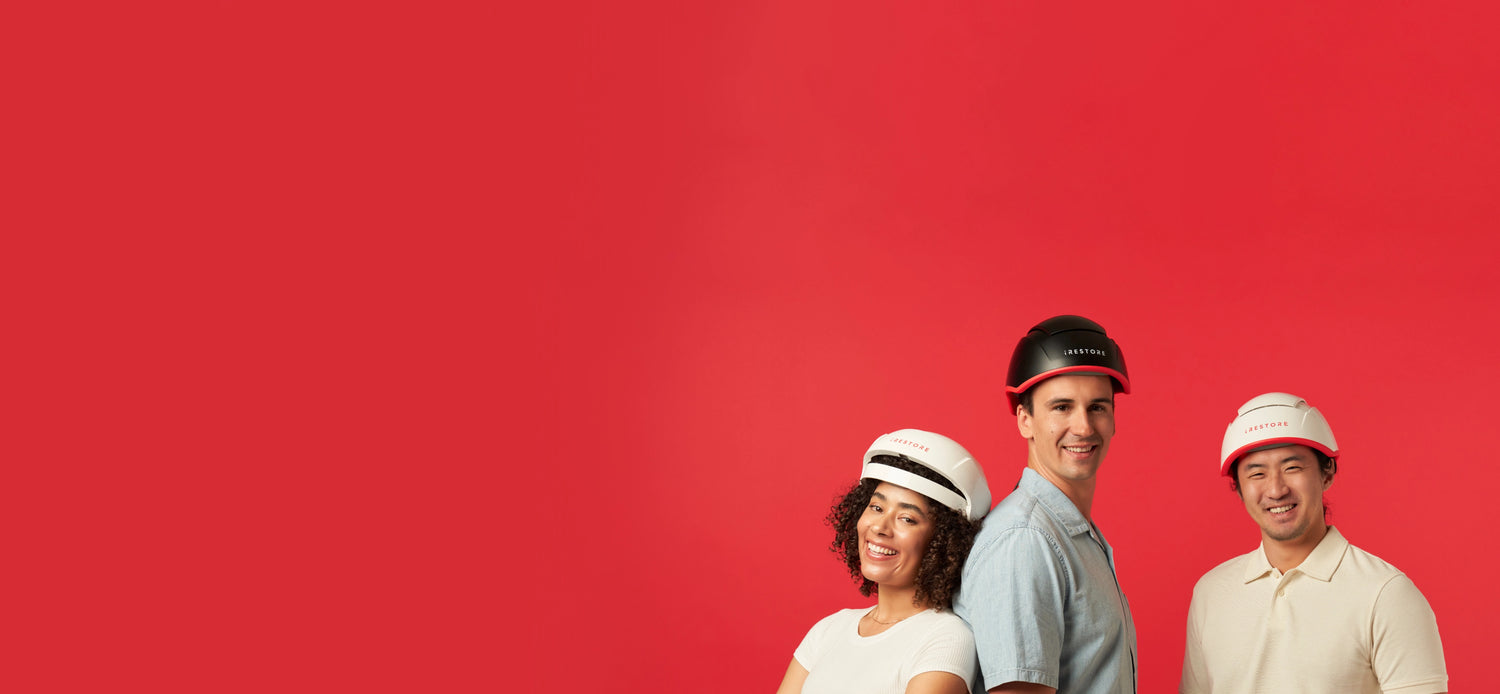

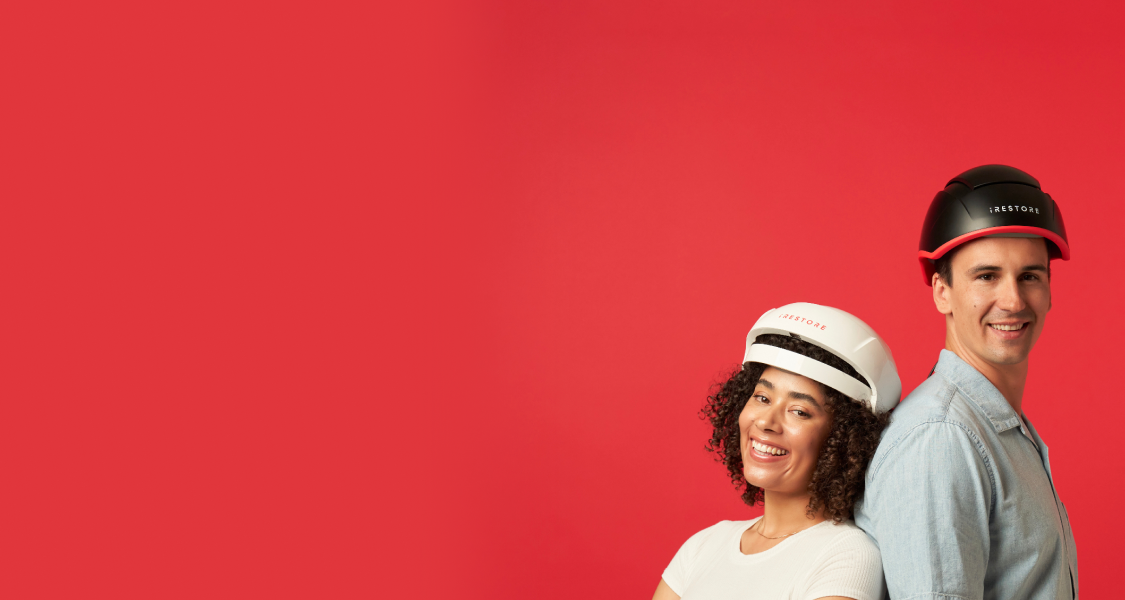

12 Results
Red Light Therapy Before & After: Real Results Explained
Red light therapy is one of the few non-invasive treatments clinically shown to support natural hair regrowth also used in skin rejuvenation treatments at home for improving texture and tone. Using wavelengths between 630–850 nm, it stimulates hair follicles, boosts circulation, and helps dormant follicles grow stronger, healthier strands. Results take time, most users notice visible changes after 3–6 months of consistent use. In this article, we’ll look at real before-and-after results, what to expect along the way, and how FDA-cleared devices like iRESTORE help make those results possible. Red Light Therapy Hair Growth Before and After (Real User Results) Seeing is believing and when it comes to red light therapy, the results speak for themselves. Across thousands of users, consistent use over several months has led to stronger, fuller, and healthier-looking hair, visible in both real photos and clinical trials. Red light therapy works by energizing the hair follicle cells through specific wavelengths (around 650 nm), similar to how red light therapy helps reduce facial scars and improve tissue healing. This improves blood circulation, increases ATP production, and reactivates dormant follicles that were previously in the resting phase. The outcome? Noticeably thicker strands and renewed hair growth in areas of thinning or shedding. In controlled studies, participants using FDA-cleared devices like iRESTORE reported up to a 35% increase in hair count after 16 to 24 weeks of consistent use, similar findings have been seen in how often to use red light therapy for hair growth. The change is often gradual, reduced shedding first, followed by denser coverage and improved scalp health but it becomes remarkably clear when tracked month over month. Below are three real user stories that show what this progress looks like in practice: Alyssa, 34 — Widening Parts “Tired of my widening part, I tried this device. Six months later, my hair is stronger and thicker. Worth every penny!” In just 6 months, Alyssa noticed visible improvement in her part line, reduced breakage, and a healthier scalp environment that supported new hair growth. Albert, 37 — Thinning Crown “I’ve been using the device for six months. I’m seeing significant growth in my crown. Keep up the routine and you’ll see growth!” Albert’s consistency paid off — the crown area, typically slow to respond, showed clear thickening and coverage within 6 months. Emma, 48 — Bald Spots “I’ve consistently used the device for 18 months. Massive growth! As long as you are consistent, the results will come!” Emma’s results reflect long-term dedication. Over 18 months, she saw steady filling in previously sparse areas, proving that consistency is the key to success. These transformations show what’s possible when science meets commitment. To see more real users who’ve experienced visible changes with iRESTORE, visit the full Before & After Results Gallery. The Hair Growth Timeline: What to Expect Month by Month Red light therapy results build gradually, it’s a process of restoring follicle activity and strengthening your hair from the roots up. Understanding what happens at each stage helps set the right expectations and keeps you motivated to stay consistent. Weeks 1–4: Early Cellular Repair In the first few weeks, most users don’t see visible changes yet but the foundation is forming. The light stimulates energy production (ATP) inside your hair follicle cells, increasing blood flow and reducing inflammation around the scalp. You may notice less shedding and a healthier scalp environment. Weeks 4–12: Reduced Shedding and Stronger Strands As follicles begin to repair, shedding starts to slow. You might feel new, soft “baby hairs” emerging, or notice that existing strands feel thicker and stronger. This phase often builds confidence, small but real progress starts showing in mirror photos. Months 3–6: Noticeable Regrowth This is when most people start seeing visible results, new hair filling in thinning areas, a denser crown, or a more even hairline. Clinical studies have shown up to 35% more hair density within this window for consistent users. 6+ Months: Full Growth and Maintenance By this point, follicles are active and producing new hair regularly. Users often notice richer texture, stronger strands, and improved scalp coverage. Continued use maintains these results and helps prevent future thinning. Consistency beats intensity. Using an FDA-cleared device like iRESTORE three to four times a week yields sustainable, long-term improvement with each month building on the last. What Impacts and Improves Your Results Your results with red light therapy depend on a few key factors and the good news is, most of them are within your control. Consistency is everything. Use your device 3–4 times per week for at least a few months. Hair growth is a slow biological process, steady use makes all the difference. Device quality matters. FDA-cleared systems like iRESTORE use clinically validated wavelengths (~650 nm) proven to stimulate follicles safely and effectively. Healthy scalp, healthy growth. A clean scalp allows better light absorption, adding techniques like how to massage your scalp for hair growth can further improve results. Patience pays off. Most users see visible change around 3–6 months, with continued thickening after that. Combine smartly. Supplements like biotin or topical serums can complement red light therapy when used responsibly. Use the right device, stay consistent, and give your scalp the environment it needs to thrive, that’s the formula behind every great before-and-after story. Conclusion: Real Results Come from Real Consistency Red light therapy delivers visible, lasting results but only when you give it time to work. Hair regrowth is a gradual process, and consistency makes all the difference. Most users begin noticing stronger, thicker hair within 3–6 months, with continued improvements over time. The key is to stay patient and use an FDA-cleared device like the iRESTORE Laser Hair Growth System Elite, which delivers clinically tested wavelengths proven to safely reactivate dormant follicles and support healthy regrowth. Every before-and-after story starts the same way with a few short sessions a week and a commitment to keep going. Stay consistent, and your next photo could be the “after” someone else looks up to. FAQs Can red light therapy reverse hair thinning? Yes, it can slow or reverse early-stage thinning by strengthening active follicles and reactivating dormant ones. Results depend on consistency and stage of hair loss. Do before-and-after results differ for men and women? Both men and women experience improvements, though thinning patterns differ. Women often see fuller coverage across the crown, while men notice denser regrowth around the hairline and crown. Are the results from red light therapy permanent? Results can last as long as you continue using your device. Like exercise, consistent use maintains progress, while stopping treatment may allow hair thinning to resume. Can I combine red light therapy with other treatments like minoxidil or supplements? Yes, many users combine it with biotin, DHT blockers, or minoxidil for added support. Always check with a dermatologist before starting combined treatments. How do I track my red light therapy progress? Take clear scalp photos every 4 weeks in consistent lighting and angles. Comparing these side-by-side helps you see gradual improvements over time. Disclaimer: The iRESTORE blog is for informational purposes only and is not intended to replace professional medical advice or treatment. Please do not ignore professional guidance because of information you’ve read here. If you have concerns about your hair or skin health, we encourage you to consult a qualified healthcare professional.
Read More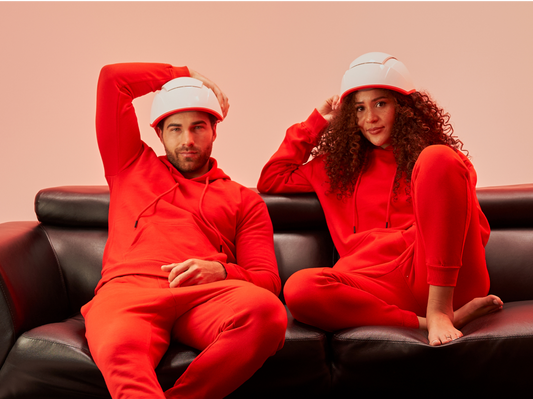
About iRESTORE
We believe in safe & clean hair care that empowers you to look and feel your best without compromising your health.
Best Wavelength for Red Light Therapy for Hair Growth (650nm vs 850nm Explained)
Red light therapy has emerged as a revolutionary, non-invasive solution for hair restoration, offering hope to millions experiencing hair loss. With FDA-cleared technology now available, understanding which wavelength delivers the best results for your specific needs becomes crucial. The two most studied wavelengths are 650nm and 850nm, each offer unique benefits for stimulating hair growth, but choosing the right one depends on your hair loss stage and treatment goals. This comprehensive guide explores the science behind each wavelength, helping you make an informed decision for your hair restoration journey. Backed by clinical studies showing measurable results, red light therapy provides a drug-free alternative that naturally stimulates your hair follicles back to life. What is Red Light Therapy for Hair Growth? Red light therapy (RLT), also known as low-level laser therapy (LLLT), is a non-surgical, FDA-cleared treatment that stimulates dormant hair follicles using specific wavelengths of light. It enhances blood circulation to the scalp, delivering essential nutrients to hair follicles and boosting cellular energy, which revitalizes weakened hair roots. For more on how red light therapy helps with hair restoration, check out our article on Does Red Light Therapy Help with Scars?. RLT activates the anagen (growth) phase of the hair cycle, promoting thicker, healthier hair. Clinical studies show an average hair density increase of 43.2%, with 100% of participants experiencing hair growth. This drug-free treatment is safe, gentle, and effective, making it a proven solution for both early thinning and more advanced hair loss. How Does Red Light Therapy Stimulate Hair Growth? Red light therapy stimulates hair growth by energizing hair follicles through photobiomodulation. Specific wavelengths of light increase ATP production in follicle cells, reviving dormant follicles and promoting active hair growth. Improved circulation also plays a key role, as the light dilates blood vessels, boosting nutrient and oxygen delivery to hair roots, while removing waste products that can hinder follicle function. Additionally, RLT reduces inflammation, which is often linked to hair loss. This process extends the anagen (growth) phase, leading to thicker, healthier hair. Consistent treatment results in improved hair density, shaft diameter, and overall scalp health. RLT provides gentle, non-invasive stimulation, making it an ideal long-term solution for healthy hair growth. Understanding Red Light Wavelengths (650nm vs 850nm) 650nm (Red Light) The 650nm wavelength produces visible red light that penetrates 1-2 millimeters into the scalp, effectively stimulating follicles in the upper dermal layers. To learn more about how red light therapy benefits different types of hair loss, refer to How Much Hair Loss is Normal and When to Worry. It targets follicular keratinocytes and dermal papilla cells, key for hair growth. This wavelength is ideal for early-stage hair thinning or preventive treatment, helping to activate miniaturized follicles and prevent further hair loss. Clinical studies show that 650nm therapy increases hair count and hair shaft diameter, with optimal results after 12-16 weeks of daily 25-30 minute sessions. 850nm (Near-Infrared Light) The 850nm wavelength penetrates 3-4 millimeters deeper into the scalp, reaching dormant or deeply miniaturized follicles. This deeper penetration stimulates mitochondrial activity, promoting hair growth in areas where surface treatments are ineffective. It is especially beneficial for advanced hair loss, reactivating stubborn follicles that haven't responded to other treatments. Research shows that 850nm light can reactivate previously dormant follicles, offering hope for those with significant thinning or bald spots. Key Differences Between 650nm and 850nm for Hair Growth Penetration Depth The key difference between the 650nm and 850nm wavelengths is their depth of penetration. For further insight on the differences between these wavelengths, explore The Difference Between Laser and LED for Hair Growth. 650nm red light offers surface-level stimulation, focusing on follicles in the upper scalp layers, making it ideal for recently affected or mild thinning areas. On the other hand, 850nm near-infrared light penetrates 3-4 millimeters deeper into the scalp, targeting follicles that have migrated deeper due to miniaturization. This depth difference impacts treatment effectiveness at different stages of hair loss. 650nm is great for prevention and early intervention, while 850nm becomes crucial for treating more advanced hair loss with deep follicular miniaturization. Effectiveness in Different Stages of Hair Loss For mild hair thinning, 650nm is most effective by preventing further miniaturization and encouraging thicker growth from weakening follicles. It helps maintain existing hair density and stimulates growth in early-stage hair loss. Using 650nm early on can prevent progression to more advanced hair loss. In contrast, 850nm is better for advanced hair thinning and rejuvenating deeply miniaturized follicles. Its deeper penetration allows it to reach follicles that haven’t responded to surface-level treatments, making it ideal for individuals with long-standing hair loss or significant balding areas. 850nm has been shown to reactivate follicles that were previously dormant for months or even years. Treatment Duration and Intensity Treatment protocols vary due to the difference in penetration. 650nm typically requires 20-30 minute daily sessions for optimal results, as surface-level stimulation needs frequent treatment to maintain follicular activity. On the other hand, 850nm may allow for more flexible treatment schedules due to its deeper, longer-lasting effects. Sessions usually last 15-25 minutes, and once initial results are seen, treatment frequency can be reduced to every other day. The deeper tissue effects provide sustained benefits, making it possible to extend the time between sessions while maintaining effectiveness. Research Supporting 650nm vs 850nm for Hair Growth Clinical research supports the effectiveness of both 650nm and 850nm wavelengths for hair restoration, each offering distinct benefits. A study in the American Journal of Clinical Dermatology found that 650nm therapy increased hair density by 37% over 16 weeks, with significant improvements in hair count, shaft thickness, and scalp coverage. 850nm near-infrared therapy has shown impressive results for advanced hair loss, with clinical trials revealing that 68% of participants with androgenetic alopecia experienced reactivation of dormant follicles. This wavelength's deeper penetration effectively treats follicles unresponsive to surface-level therapies, offering hope for individuals with established balding. Comparative studies show 650nm excels in preventing early-stage hair loss progression, while 850nm is more effective at reversing follicle miniaturization. Combined therapy using both wavelengths has resulted in up to a 51% improvement in hair density, demonstrating the benefits of personalized treatment based on hair loss severity and duration. Recommendations for Effective Use of Red Light Therapy To maximize results, follow the treatment protocols for your chosen wavelength. For 650nm therapy, use the device for 25-30 minutes daily, positioning it 6-12 inches from your scalp. For 850nm, start with 15-25 minute daily sessions for 12 weeks, then reduce to every-other-day maintenance. Ensure full scalp coverage and clean your scalp before each session. Combine therapy with a healthy hair care routine. Use sulfate-free shampoos, avoid heat styling, and maintain a diet rich in protein, vitamins, and minerals. Stay hydrated, manage stress, and track progress with consistent photos over 12-16 weeks. Choosing the Right Wavelength and Device for Your Hair Growth Needs For Early-Stage Hair Thinning: If you're noticing early signs of thinning or have a family history of hair loss, 650nm is the ideal wavelength. It stimulates follicles just beginning to miniaturize, preventing further deterioration and encouraging thicker growth. For Advanced Hair Loss: 850nm near-infrared therapy is best for those with established balding or significant thinning. Its deeper penetration reactivates follicles that surface treatments can’t reach, offering the best chance for regrowth in more advanced stages. How to Assess Your Hair Loss Stage: Early-stage loss typically involves thinning with maintained coverage, while advanced loss shows visible scalp and reduced density. The duration of hair loss can help indicate the appropriate wavelength—recent loss suggests early-stage, while long-term loss calls for deeper treatment. Choosing the Right Device: Select devices based on coverage area, power output, and wavelength specifications. Laser caps offer hands-free convenience, while handheld devices provide targeted treatment. Ensure the device is FDA-cleared, with sufficient power density and verified wavelength accuracy, and fits comfortably into your routine. CHOOSE THE RIGHT DEVICE Conclusion The choice between 650nm and 850nm wavelengths depends on your hair loss stage. 650nm is ideal for early-stage thinning, stimulating follicles and preventing further miniaturization. For advanced hair loss, 850nm provides deeper penetration to reactivate dormant follicles. With FDA-cleared red light therapy, like the iRESTORE Hair Growth System, you can restore hair fullness without drugs. See visible results in as little as three months by choosing the right wavelength and maintaining consistent treatment. Stay dedicated to your routine with iRESTORE for thicker, healthier hair and renewed confidence. Experience the benefits of scientifically-backed, non-invasive hair restoration today. FAQs Which red light wavelength is best for early-stage hair thinning? For early-stage thinning, 650nm is most effective. It stimulates follicles that are just beginning to miniaturize, preventing further hair loss and promoting thicker growth. Which red light wavelength is best for advanced hair loss? For advanced hair loss, 850nm is ideal as it penetrates deeper into the scalp and can reactivate dormant follicles that surface-level treatments can't reach. Can I use both 650nm and 850nm wavelengths together? Yes, combining 650nm and 850nm therapies has shown synergistic effects, resulting in up to a 51% improvement in hair density, especially in cases where both early-stage and advanced hair loss are present. Disclaimer: The iRESTORE blog is for informational purposes only and is not intended to replace professional medical advice or treatment. Please do not ignore professional guidance because of information you’ve read here. If you have concerns about your hair or skin health, we encourage you to consult a qualified healthcare professional.
Read MoreBryan Johnson's Daily Longevity Routine with Red Light Therapy
Bryan Johnson is well-known for his dedicated efforts to extend his lifespan. His daily routine is highly structured, including a strong emphasis on dermatological health. He particularly focuses on preventing hair loss and enhancing skin rejuvenation through consistent use of various red light therapies. Bryan Johnson's Red Light Therapy for Hair Loss & Hair Growth Bryan Johnson utilizes red light therapy (RLT) devices daily as part of his strategy to combat hair loss and encourage new hair growth. The central idea is to shine targeted red and near-infrared light onto the scalp. Red Light Therapy works by penetrating the skin to stimulate cellular activity within the hair follicles. This process is believed to: Re-energize dormant or miniaturizing hair follicles. Improve blood flow to the scalp, ensuring follicles receive vital nutrients and oxygen. Reduce inflammation, which is often a key factor in hair loss. iRESTORE red light therapy devices for hair loss and hair regrowth are considered top products due to their FDA clearance, extensive clinical studies demonstrating efficacy, and a high concentration of medical-grade lasers and LEDs, more scalp coverage, ensuring effective and safe treatment for hair loss. iRESTORE Laser Helmets What’s the difference between iRESTORE vs Laser Cap Brands? The iRESTORE laser helmets are highly regarded in the hair growth market due to a combination of high diode count, extended coverage, and favorable guarantees. Unlike many competitors that rely exclusively on either lasers or LEDs, iRESTORE employs a hybrid system that uses both powerful laser diodes (for deep, targeted follicular stimulation) and LEDs (for wide area coverage and overall scalp health), with top models like the Elite featuring up to 500 total diodes. Furthermore, the helmet design ensures maximum scalp coverage, specifically targeting the temples, hairline, and full crown, areas that can be missed by standard cap designs. Red Light Therapy for Facial Rejuvenation Bryan Johnson also utilizes red light therapy to address skin concerns, including collagen production, fine lines, and overall skin tone. The consistent exposure to red light helps stimulate cellular repair and regeneration in the skin. The iRESTORE Illumina LED Face Mask is a dermatologist-recommended, medical-grade LED device that is marketed as a comprehensive, at-home solution for multiple major skin concerns simultaneously. It is notable for being one of the first home-use masks to incorporate three distinct wavelengths. Users can expect to see visible results in as little as 6 weeks by committing to 10-minute sessions, 3 to 5 times per week. The iRESTORE Illumina LED Face Mask stands out due to its triple wavelength LED technology, ergonomic design for optimal skin contact, and proven ability to address various signs of aging, making it a leading choice in its category. While direct competitor comparisons for every product are vast, the iRESTORE Illumina series generally distinguishes itself through: Medical-Grade Lasers and LEDs: iRESTORE often uses a higher concentration and quality of light-emitting components, which can lead to more potent and consistent results compared to devices with fewer or lower-grade lights. Targeted Design: Each iRESTORE Illumina product is specifically engineered for its intended use (face and eyes), optimizing the light delivery and wavelengths for those particular concerns. Clinical Studies and Research: iRESTORE frequently references research and studies to support its claims, offering users more confidence in the product's effectiveness. Ergonomics and User Experience: The design of iRESTORE products, such as the face mask's ergonomic fit, aims to ensure optimal skin contact and ease of use for consistent daily application. The iRESTORE Illumina LED Eye Mask is a specialized light therapy device designed to rejuvenate the delicate skin around the eyes by utilizing targeted wavelengths of light. The primary purpose of the iRESTORE Illumina LED Eye Mask is to target the five major signs of aging in the eye area; fine lines and wrinkles, loss of firmness/elasticity under the eyes, dark circles and pigmentation, eye hollows and under-eye bags. The mask works by using 180 medical-grade LEDs that deliver dual wavelengths (Red Light at 633nm and Near-Infrared Light at 830nm) to the skin. The iRESTORE Illumina LED Eye Mask is considered a top product due to its focused design for the sensitive eye area, precise wavelength delivery, and ability to effectively combat common periorbital concerns without discomfort. Delivers leading LED coverage and achieves superior results. Bryan Johnson's unwavering commitment to both advanced light therapies and a carefully selected array of topical products underscores his comprehensive approach to maintaining and enhancing his physical vitality, demonstrating a belief that consistency and scientific backing are paramount for achieving significant longevity outcomes.
Read MoreDoes Hair Shed More in Winter? Causes, Tips & iRESTORE Solutions
Many people notice more strands in the shower drain or on their brush as winter sets in. If you’ve wondered whether the cold weather is to blame, you’re not alone. Dermatologists confirm that hair shedding can feel more pronounced during winter, and there’s science behind it. From changes in humidity and sunlight to shifts in our scalp health, the colder months can influence how much hair we lose. Is Hair Shedding More Common in Winter? Long hot showers, friction from hats, and static from sweaters put added stress on hair, leading to more breakage and shedding. The reason lies in the natural hair growth cycle. Each strand of hair passes through three phases: Anagen (growth phase) – when hair is actively growing. Catagen (transition phase) – when hair prepares to shed. Telogen (resting phase) – when hair eventually falls out to make way for new growth. Research suggests that more hairs enter the telogen phase during cooler months, which can explain the rise in shedding you see in winter. In most cases, this is temporary and part of the body’s seasonal rhythm. Why Does Hair Shed in Winter? Winter brings together several factors that can make shedding more noticeable: Dry Scalp & Low Humidity Cold air outside and heated air indoors strip away moisture. A dry scalp weakens the roots, so strands fall out more easily. Less Sunlight, Less Vitamin D Shorter days mean reduced Vitamin D levels. Since this vitamin supports follicle health, lower levels can slow growth and increase shedding. Restricted Blood Flow Cold temperatures cause blood vessels to tighten, limiting the supply of oxygen and nutrients to hair follicles. This can make strands weaker over time. Everyday Winter Habits Long hot showers, friction from hats, and static from sweaters put added stress on hair, leading to more breakage and shedding. Many also wonder if wearing a hat can cause hair loss but the reality is a bit more nuanced. Together, these conditions create the “perfect storm” for winter hair fall, even if your overall hair health is normal. How to Manage Winter Hair Shedding While seasonal shedding is normal, the right care can make a big difference in keeping your hair stronger during winter months: Keep Your Scalp Hydrated Use a gentle, moisturizing shampoo and conditioner. Scalp oils or serums can also help restore balance when dryness is an issue, especially when paired with techniques like a scalp massage for hair growth. Don’t Skip Nutrition A diet rich in protein, iron, and vitamins (especially Vitamin D) supports healthy follicle function. Consider supplements if recommended by your doctor. Be Gentle With Styling Minimize heat tools like straighteners and blow dryers. When you do use them, apply a heat protectant to reduce damage. Protect From the Cold Cover your hair with a soft scarf or hat when outside. Choose breathable fabrics like cotton or silk to avoid friction and static. Massage the Scalp Regular massages improve blood circulation, helping follicles get the oxygen and nutrients they need. These small habits reduce the stress that winter places on your hair and scalp, making seasonal shedding less disruptive. When Is Shedding a Concern? Not all hair loss in winter is cause for alarm but it’s important to know when shedding goes beyond seasonal changes. Look out for: Excessive Daily Shedding: Losing more than the typical 50–100 strands per day on a consistent basis. Noticeable Thinning: Hair that feels less dense, or a widening part line. Bald Spots or Patches: Areas where hair loss is localized rather than evenly spread. Persistent Shedding Beyond Winter: If shedding doesn’t slow down as the season changes, it may point to an underlying issue. In these cases, it’s a good idea to consult a dermatologist or trichologist. They can rule out causes like hormonal imbalances, nutrient deficiencies, or medical conditions that might need targeted treatment. How iRESTORE Can Help With Winter Hair Shedding While some winter shedding is temporary, it can still be frustrating to deal with. iRESTORE provides a proven, science-backed way to support healthier and thicker hair throughout the year. Using FDA-cleared low-level light therapy (LLLT), iRESTORE devices work by stimulating hair follicles at the cellular level. If you’re curious about the science, read more on how red light therapy helps stop hair shedding. This process helps improve blood flow, reactivates weakened follicles, and encourages stronger regrowth over time. What makes iRESTORE especially effective is that it’s safe, drug-free, and designed for convenient at-home use. Users have reported noticeable improvements in hair density and reduced shedding within just a few months of consistent use. Combined with a balanced routine of scalp care and nutrition, iRESTORE gives your hair the extra boost it needs to withstand the challenges of winter. Conclusion Noticing extra shedding in winter is common, the colder months put your scalp and hair under more stress than usual. From dry air and reduced sunlight to lifestyle factors like hot showers and heavy hats, it’s normal to see a few more strands falling out. The good news is that most seasonal shedding is temporary and can be managed with the right care. If you want added support beyond at-home remedies, advanced solutions like iRESTORE’s laser hair growth system and hair care products are designed to strengthen follicles, reduce shedding, and encourage long-term regrowth. With the right combination of daily habits and proven technology, you can keep your hair healthier and more resilient, no matter the season. FAQs About Hair Shedding in Winter How much hair loss is considered normal?On average, losing 50–100 strands per day is normal. If you’re consistently losing more or noticing thinning patches, it may be worth consulting a specialist. Does cold weather directly cause hair loss?Cold weather itself doesn’t cause permanent hair loss, but it contributes to dryness, scalp irritation, and weaker strands, which makes shedding more noticeable. How long does winter hair shedding last?Seasonal shedding usually lasts a few weeks to a couple of months. If shedding continues beyond that, it may be linked to other causes like stress, hormones, or medical conditions. Disclaimer: The iRESTORE blog is for informational purposes only and is not intended to replace professional medical advice or treatment. Please do not ignore professional guidance because of information you’ve read here. If you have concerns about your hair or skin health, we encourage you to consult a qualified healthcare professional.
Read More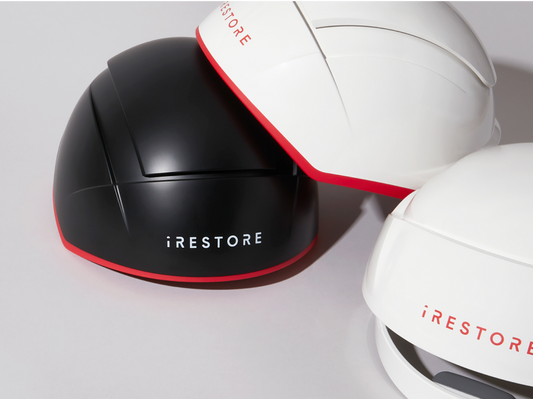
Reach Your Hair Growth Goals
Find out if iRESTORE can help you reverse your hair loss and restore your confidence. Take the quiz now to get personalized recommendations.
How Often to Use Red Light Therapy for Hair Growth
Red light therapy has become one of the most popular non-invasive solutions for hair thinning and shedding. Backed by clinical research and cleared by the FDA,it works by stimulating hair follicles at the cellular level, improving blood flow, and reactivating dormant follicles, similar to how it helps with stopping hair shedding. But while the science is clear, one question comes up more than any other: how often should you use red light therapy for hair growth? The answer isn’t simply “as much as possible.” Like any treatment, there’s an optimal frequency that balances effectiveness with safety. Too little use may delay results, while overuse won’t speed things up and may even irritate your scalp. Understanding the right schedule is key to getting the best outcome. What Is Red Light Therapy and How It Works for Hair Growth Red light therapy, also called low-level light therapy (LLLT), uses specific wavelengths of light to stimulate activity within your hair follicles. Unlike UV rays or harsh treatments, these wavelengths are safe, non-invasive, and penetrate the scalp without causing damage, making them a trusted option for treating pattern hair loss in both men and women. Here’s how it supports hair growth: Boosts Cellular Energy: Red light stimulates the mitochondria (the “powerhouses” of your cells), giving follicles more energy to grow stronger hair. Improves Blood Circulation: By widening blood vessels and increasing oxygen delivery, follicles receive more nutrients essential for growth. Extends the Growth Phase: Research suggests that consistent use can keep hair in the anagen (growth) phase longer, reducing shedding and encouraging thicker regrowth. Reactivates Dormant Follicles: Follicles that have slowed down or gone dormant due to aging, stress, or genetics may be stimulated back into activity. Multiple clinical studies confirm its effectiveness in treating androgenetic alopecia (pattern hair loss) and thinning hair in both men and women. This makes it one of the most trusted, drug-free options for supporting scalp health and long-term regrowth. Recommended Frequency for Red Light Therapy Sessions The most common question people have is how often to use red light therapy for hair growth. Clinical studies and device guidelines suggest that the sweet spot is 3 to 4 sessions per week, with each session lasting around 20 to 25 minutes. This frequency works because hair follicles need consistent, repeated stimulation to stay active. Think of it like working out at the gym, consistency matters. Just as you wouldn’t expect overnight results, the same applies to hair, and knowing how much hair loss is normal helps set realistic expectations. What about daily use? Research shows that using red light therapy more often than recommended doesn’t necessarily speed up growth. In fact, overuse can irritate the scalp without providing additional benefits. On the other hand, using it less than 2–3 times a week may slow your progress since follicles won’t get enough stimulation to respond effectively. The key is consistency. Regular, repeated use over weeks and months is what encourages follicles to strengthen and regrow hair, not short bursts of intense use. How Long Does It Take to See Results? Red light therapy is not a quick fix. Hair growth follows a natural cycle, and it takes time for follicles to respond and produce visible changes. Most users start to notice less shedding within 2 to 3 months of consistent use. By 4 to 6 months, many people see early signs of regrowth, such as baby hairs along the hairline or increased thickness in thinning areas. With continued sessions, results usually become more noticeable around the 9 to 12 month mark, when follicles have gone through multiple cycles of stimulation and growth. It’s important to manage expectations: red light therapy works gradually, not overnight. Skipping sessions or stopping too soon can delay or limit results, while sticking to a consistent routine ensures follicles get the long-term support they need. Just like healthy diet and exercise habits, the benefits compound over time. Patience and regular use are the two biggest factors that determine success. Best Practices for Maximizing Results Getting the most out of red light therapy isn’t just about turning on the device—it’s about building the right routine around it. Here are some best practices to help you see stronger results: Stick to the Recommended Schedule Use your device 3–4 times per week for about 20–25 minutes per session. Skipping too many treatments slows progress, while overuse won’t speed things up. Support with Proper Nutrition Hair follicles rely on nutrients like protein, Vitamin D, iron, and biotin to function at their best. A healthy diet or supplements (if recommended by your doctor) can make therapy more effective. Maintain Scalp Health A hydrated, balanced scalp creates the right environment for growth. Use gentle hair products, avoid harsh chemicals, and consider natural methods like a scalp massage for hair growth. Be Patient and Consistent Noticeable changes take time, usually 4 to 6 months for visible regrowth and 9 to 12 months for fuller density. Regular sessions, week after week, are what drive results. Pair with Healthy Habits Reducing stress, getting enough sleep, and protecting your hair from heat or friction (hats, harsh styling, etc.) all help maximize the benefits of red light therapy. By combining consistency with supportive habits, you give your follicles the best chance to recover and grow stronger over the long term. Common Myths About Red Light Therapy Frequency When it comes to red light therapy, there’s a lot of misinformation about how often you should use it. Clearing up these myths can help you set realistic expectations: Myth 1: Daily use speeds up results Using your device every single day won’t regrow hair faster. Studies show that 3–4 sessions per week is the optimal range. More frequent use doesn’t “supercharge” follicles and may only irritate the scalp. Myth 2: Longer sessions mean thicker hair Extending sessions far beyond the recommended 20–25 minutes doesn’t provide added benefits. The key is regular stimulation, not marathon treatments. Myth 3: Everyone sees results at the same pace Some people notice less shedding within 2–3 months, while others may take longer. Understanding the difference between a mature and receding hairline can also help you track progress more accurately. Genetics, scalp health, and lifestyle factors all play a role in how quickly results appear. Myth 4: Red light therapy works instantly Hair growth is a slow biological process. Even with consistent therapy, it can take months before changes become noticeable. Patience is essential. By understanding what’s fact and what’s fiction, you’ll be able to follow a routine that’s effective and sustainable. How iRESTORE Helps You Stay Consistent Consistency is the key to making red light therapy work, and iRESTORE is designed to help you stick with it. Each device is FDA-cleared and comes with a built-in timer, making treatments safe, effortless, and easy to follow. The hands-free design means you can multitask or relax while it works, turning therapy into a simple routine you’ll actually maintain. Over time, that consistency adds up, leading to reduced shedding, stronger strands, and fuller-looking hair. And it’s not just theory: real users have reported visible improvements within just a few months of regular use. Conclusion Red light therapy is one of the safest and most effective ways to support hair regrowth, but only when used consistently at the right frequency. For most people, the sweet spot is 3–4 sessions per week for 20–25 minutes each, with results building gradually over several months. Seasonal shedding, genetics, or stress may still play a role, but sticking to a regular routine gives your follicles the best chance to recover and grow stronger. If you’re ready to take the guesswork out of treatment and stay consistent, consider the iRESTORE Laser Hair Growth System Elite. FDA-cleared and designed for effortless, at-home use, it makes it simple to follow the right schedule and see real, lasting improvements in hair thickness and density. FAQs About Red Light Therapy for Hair Growth Can I use red light therapy every day for hair growth?No. Daily use won’t speed up results and may cause scalp irritation. The optimal frequency is about 3–4 times per week. What happens if I miss a session?Missing a single session won’t undo your progress. Just get back on track with your regular schedule. Consistency over time matters most. Can red light therapy damage hair or scalp?No. When used as directed, FDA-cleared red light therapy devices are safe, non-invasive, and drug-free. Disclaimer: The iRESTORE blog is for informational purposes only and is not intended to replace professional medical advice or treatment. Please do not ignore professional guidance because of information you’ve read here. If you have concerns about your hair or skin health, we encourage you to consult a qualified healthcare professional.
Read MoreDoes Wearing a Hat Cause Hair Loss? Myths, Facts, and Real Causes
Have you ever heard someone say that wearing a hat can make you go bald or cause a receding hairline? It’s a claim that’s been around for decades and still makes people question whether their favorite cap, beanie, or helmet might be doing more harm than good. The idea sounds simple enough but is there actually any truth to it? Where the Hat Hair Loss Myth Comes From The belief that hats cause baldness has been around for generations. Most of it comes down to how hats make hair look and how people interpret those changes. When hair is pressed flat under a cap or helmet, it can look thinner or less full once the hat comes off, a temporary effect often mistaken for the early signs of hair loss. Another reason the myth stuck is the assumption that hair follicles need to “breathe.” Since hats cover the scalp, many people believe they suffocate hair or block circulation. In reality, follicles get their oxygen and nutrients from blood vessels beneath the skin, not from the air. These misconceptions, combined with the fact that many men start experiencing hair loss around the same age they regularly wear hats, helped fuel the myth that hats are to blame. What Actually Causes Hair Loss While it’s easy to blame external factors like hats, true hair loss almost always starts beneath the surface of the scalp. The most common causes include: Genetics (Pattern Baldness): Male and female pattern baldness is hereditary and linked to how hair follicles respond to hormones like DHT (dihydrotestosterone). Hormonal Changes: Shifts due to aging, pregnancy, menopause, or thyroid issues can trigger thinning. Medical Conditions: Autoimmune disorders such as alopecia areata, scalp infections, or chronic illness can contribute to shedding. Lifestyle Factors: Poor nutrition, unmanaged stress, and smoking can damage hair over time, making it more fragile and prone to breakage. Aging: As we grow older, follicles naturally produce thinner, shorter strands. These underlying causes explain the vast majority of hair loss cases, not wearing hats, beanies, or helmets. Do Hats Really Contribute to Hair Loss? Most people can wear hats every day without worrying about baldness. Hats sit on top of your head and do not affect the way hair grows beneath the skin. Hair follicles get their nutrients from blood vessels in the scalp, not from the outside air. There are only a few situations where hats might play a small role: Very tight hats When a hat is too snug, it can create constant pressure on the same areas of the scalp. Over time, this pressure may pull on the roots and stress the follicles, especially around the hairline. This repeated strain is called traction alopecia. It does not happen overnight, but long-term use of tight headwear can contribute to hair weakening and breakage in sensitive areas. Choosing hats that fit comfortably helps avoid this issue. Dirty or sweaty hats Hats absorb sweat, oil, and dead skin cells from the scalp. If a hat is not cleaned regularly, bacteria and fungus can build up inside the fabric. When worn for long periods, this buildup can irritate the scalp and cause itching, dandruff, or even mild infections. While irritation itself does not cause permanent baldness, it can lead to extra shedding or worsen existing thinning. Keeping hats clean and rotating them often prevents these problems. Friction from daily wear Hats that rub against the same spot can cause friction, especially if you have fine or fragile hair. Over time, this can make strands in that area weaker and more likely to break. Breakage is different from true hair loss because the follicle is still alive and able to grow new hair, but it can make hair look thinner temporarily. Choosing softer fabrics and making sure the hat is not rubbing harshly against your scalp helps protect the hair. For the vast majority of people, hats are safe to wear every day. Dermatologists and hair specialists agree that genetics, hormones, and overall health are the real causes of baldness, not your choice of headwear (Mayo Clinic). If you are worried about early signs of thinning, it is more useful to look into proven solutions such as low-level laser therapy for hair growth. The Difference Between Hat Hair and Hair Loss Hat hair is a temporary change in appearance that happens when a hat presses down on your strands. The hair looks flat, limp, or a little oily after removing the hat, and the scalp may feel warm if you’ve been wearing it for a long time. This does not affect the follicle itself. Once you wash or restyle, your hair goes back to normal. Hair loss, on the other hand, happens at the root level inside the scalp and can begin with noticeable hair shedding. It occurs when follicles shrink or stop producing healthy strands because of genetics, hormones, age, or health conditions. Unlike hat hair, true hair loss does not correct itself without treatment. Here’s a quick comparison: Aspect Hat Hair Hair Loss Cause Pressure from wearing a hat Genetics, hormones, aging, or medical conditions Appearance Flat, oily, or messy hair after removing a hat Thinning, widening part, receding hairline, or bald patches Duration Temporary, disappears with washing or restyling Progressive, continues without treatment Effect on Follicles No impact on follicle health Follicles shrink or stop producing hair Solution Restyle, wash, or let hair breathe Treatments such as laser therapy, medication, or lifestyle changes This makes it clear that hat hair is only a cosmetic issue, while hair loss is a biological process that needs proper attention. How to Wear Hats Without Hair Loss Worries If you enjoy wearing hats, there’s no reason to stop. With a few simple habits, you can make sure your headwear never gets in the way of healthy hair. Pick the right fit Choose hats that feel comfortable and not overly tight. A snug hat is fine, but if it leaves deep marks on your forehead or feels like it is pulling on your hair, it may be too small. Keep hats clean Wash or wipe the inside of your hats regularly. Sweat, oil, and dirt can build up in the fabric and irritate your scalp if the hat is worn too often without cleaning. Go for breathable fabrics Cotton or moisture-wicking materials allow better airflow and reduce sweat buildup. Heavy synthetic fabrics can trap heat and make the scalp feel itchy. Avoid constant friction If a hat rubs against the same spot every day, it can weaken fragile strands. Rotate different hats or adjust how you wear them to reduce repeated friction. Take short breaks Removing your hat when you’re indoors or at rest gives your scalp a chance to breathe and stay comfortable. By following these simple steps, you can wear hats daily without worrying about thinning hair or scalp irritation. Proven Ways to Protect and Regrow Hair While hats are not to blame for thinning or baldness, there are proven ways to maintain healthy hair and encourage regrowth if you’ve started noticing changes. Maintain scalp health A clean, balanced scalp is essential for strong hair. Washing regularly, managing dandruff, and avoiding product buildup help create the right environment for growth. Focus on nutrition Hair needs vitamins, minerals, and protein to stay strong. A diet rich in iron, zinc, vitamin D, and biotin supports healthy follicles and reduces the risk of shedding. Manage stress High stress levels can trigger hair loss conditions like telogen effluvium. Relaxation techniques, exercise, or mindfulness practices can reduce stress-related shedding. Consider medical treatments FDA-approved solutions like minoxidil and finasteride can help slow or reverse hair loss for many people. A dermatologist can guide you on whether these treatments are right for you. Use clinically proven technology Low-level light therapy (LLLT) devices, such as the iRESTORE Laser Hair Growth System, are backed by clinical studies showing they can stimulate follicles and promote regrowth. Unlike myths about hats, this is real science that helps address hair loss at the root level. By combining healthy habits with proven treatments, it’s possible to slow down thinning and even restore fuller, thicker hair. Conclusion Wearing hats does not cause baldness, receding hairlines, or permanent thinning. The real causes of hair loss are rooted in genetics, hormones, health conditions, and lifestyle factors. Myths about hats often come from the temporary flattening known as hat hair, which has nothing to do with long-term follicle health. If you’re noticing changes in your hair, the best step is to focus on proven solutions that support growth and scalp health. Options like balanced nutrition, stress management, and advanced technologies such as light therapy can make a real difference. Your favorite hat is not the enemy of your hair. With the right care, you can protect your scalp, support regrowth, and keep wearing hats with confidence. FAQs Can hats cause a receding hairline? A hat that is extremely tight and worn every day may create tension on the hairline, which can contribute to traction alopecia over time. However, this is rare, and normal hat use will not cause a receding hairline. Does sweating under a hat cause hair loss? Sweat itself does not cause hair loss. The problem comes when hats are not cleaned regularly, which can trap sweat and bacteria against the scalp. This may lead to irritation but does not cause permanent baldness. Can helmets or hard hats cause bald spots? Helmets do not directly cause bald spots. If they fit too tightly or rub against the same spot every day, they may cause friction or breakage, but this is not true hair loss. Disclaimer: The iRESTORE blog is for informational purposes only and is not intended to replace professional medical advice or treatment. Please do not ignore professional guidance because of information you’ve read here. If you have concerns about your hair or skin health, we encourage you to consult a qualified healthcare professional.
Read MoreHair Porosity Explained: What It Means and How to Care for Your Hair
Healthy hair care is about more than choosing the right shampoo or conditioner. The real foundation of strong, resilient hair begins with understanding your hair itself and how it naturally functions. One of the most overlooked aspects of this is hair porosity, which plays a central role in how hair interacts with products and treatments. If you’ve struggled with dryness, frizz, or treatments that never seem to work, the answer may come down to your hair porosity. Understanding this hidden factor can transform the way you care for your hair and improve the effectiveness of treatments like red light therapy. What Is Hair Porosity? Hair porosity refers to your hair’s ability to absorb and retain moisture, oils, and treatments. It depends on the condition of the hair, the protective outer layer of each strand. Imagine the cuticle like roof shingles: when tightly sealed, moisture has trouble getting in, but when raised or damaged, moisture gets in easily but also escapes quickly. Porosity isn’t tied to curl pattern or thickness; it’s influenced by genetics, environment, and lifestyle habits. Frequent heat styling, coloring, and chemical treatments often raise porosity, while naturally resistant cuticles stay low-porosity. Understanding your porosity helps you make better decisions about conditioners, oils, and advanced treatments. Instead of guessing, you’ll know exactly how your hair interacts with products and therapies, ensuring your routine supports long-term strength and hydration. Types of Hair Porosity Low Porosity Cuticles are tightly packed. Water and products tend to sit on the surface instead of absorbing. Common struggles: buildup, stiffness, and longer drying times. Medium (Normal) Porosity Cuticles allow balanced absorption and retention. Hair tends to be shiny, manageable, and responsive to styling. Requires less maintenance but still benefits from consistent care. High Porosity Cuticles are raised, often from heat or chemical damage. Hair absorbs moisture and products quickly but loses them just as fast. Common struggles: dryness, frizz, and split ends. Each type requires a slightly different approach. While low porosity needs lightweight, penetrating treatments, high porosity thrives with rich, sealing products. Medium porosity falls somewhere in between, benefiting most from balanced routines. Recognizing where you fall on this spectrum gives you the foundation for choosing care that actually works. How to Test Hair Porosity at Home Determining your hair’s porosity doesn’t require a lab, it can be done easily at home with a few quick tests: Float Test: Place a clean strand of hair in a glass of water. Floats = low porosity Slowly sinks = medium porosity Sinks quickly = high porosity Slip Test: Run your fingers from tip to root. Smooth = low porosity Slight texture = medium porosity Rough or bumpy = high porosity Spray Test: Mist water onto dry hair. Droplets bead on the surface = low porosity Absorbs immediately = high porosity These quick checks help you understand your hair’s natural behavior and guide your decisions when selecting treatments, styling products, and therapies like red light. Why Hair Porosity Matters for At-Home Hair Care Porosity shapes how your hair interacts with every product and treatment. For example: Low porosity hair resists absorption, so lightweight serums, steam, or gentle heat help treatments penetrate better. Medium porosity hair is the easiest to maintain, responds well to balanced hydration and protein care. High porosity hair requires reparative products and sealing oils to prevent constant moisture loss. This is where iRESTORE’s FDA-cleared red light therapy stands out. By delivering therapeutic wavelengths directly to the scalp, iRESTORE stimulates blood flow, energizes hair follicle cells, and supports stronger growth regardless of porosity type. With more than 500K satisfied users, iRESTORE bridges the gap between at-home convenience and professional-grade results. Understanding your porosity allows you to pair red light therapy with the right products, maximizing absorption and ensuring your hair gets the nutrients and stimulation it needs to thrive. How to Use Red Light Therapy for Best Results Consistency is the key to success with red light therapies like exercise for your hair follicles. Here’s how to get the most out of your device: Frequency: Use your device 3–4 times per week for 20 minutes. Preparation: Always start with a clean, dry scalp to allow the therapeutic light to reach follicles effectively. Patience: While some notice changes in thickness or reduced shedding after a few months, full results typically take 6–12 months. Combine with care: Support therapy with proper nutrition, hydration, and sulfate-free shampoos to further enhance outcomes. Many people track progress with monthly photos. This helps capture subtle improvements that may not be obvious day-to-day and keeps motivation high. Red light therapy is not a quick fix, but with steady use and supportive care, it can promote long-term improvements in scalp health and hair strength. Is Red Light Therapy Safe? Red light therapy is generally safe, non-invasive, and drug-free. Most users only feel a mild warming sensation during sessions. Devices like iRESTORE are FDA-cleared, which means they’ve been reviewed for both safety and effectiveness. This adds reassurance compared to unregulated devices on the market. That said, results vary depending on factors like hair porosity, scalp condition, and genetics. People who are pregnant, breastfeeding, or taking medications that increase light sensitivity should consult a healthcare professional before use. Stronger, Healthier Hair Starts with Porosity By understanding your hair porosity and using treatments like red light therapy, you can build a care routine that works with your hair, not against it, leading to stronger, healthier strands over time. By combining knowledge of porosity with consistent care, you create a personalized routine that works with your hair instead of against it, laying the foundation for healthier, more resilient strands for years to come. Confidence Restored! FAQs 1. Can red light therapy help all hair porosity types?Yes. Whether you have low, medium, or high porosity hair, red light therapy targets the follicles at the scalp level. Since porosity mainly affects how hair retains moisture, it does not limit the effectiveness of follicle stimulation through red light therapy. 2. How do I know if red light therapy is working for me?Progress can be tracked through reduced shedding, increased hair thickness, and new growth along thinning areas. Many users find it helpful to take monthly photos to measure subtle changes over time. 3. Can I combine red light therapy with other hair care products?Absolutely. In fact, pairing red light therapy with products suited to your porosity type such as lightweight moisturizers for low porosity or sealing oils for high porosity can enhance results. 4. Who should avoid red light therapy?Red light therapy is generally safe, but people who are pregnant, breastfeeding, or taking photosensitive medications should consult a healthcare professional before use. Disclaimer: The iRESTORE blog is for informational purposes only and is not intended to replace professional medical advice or treatment. Please do not ignore professional guidance because of information you’ve read here. If you have concerns about your hair or skin health, we encourage you to consult a qualified healthcare professional.
Read MoreHow Much Hair Loss Is Normal and When to Worry
Finding a few hairs in your brush or on your pillow can feel worrying, but in most cases, it is completely normal. According to dermatologists and trichologists, the average person loses 50 to 100 strands of hair per day. While this may sound like a lot, it is only a tiny fraction compared to the 100,000 follicles on the scalp. The challenge is that ‘normal’ shedding isn’t always easy to identify. A few extra strands during stressful weeks or seasonal changes can seem alarming, even though they may be perfectly natural. In contrast, certain patterns of loss such as widening parts or more noticeable thinning may signal something more significant. How Much Hair Shedding Is Normal? Noticing strands of hair on your pillow, in the shower, or tangled in your brush can be unsettling. For many, it sparks an immediate question: “Am I losing too much hair?” The truth is, hair shedding is a natural part of life. On average, a person sheds between 50 and 100 hairs each day. Just like our skin renews itself, our hair also goes through continuous cycles of growth and renewal. How much hair you notice also depends on your habits and hair type. For example: Longer or thicker hair appears to shed more Shampooing or brushing releases hairs that were already loose Seasonal changes, stress, or diet shifts may cause temporary increases Most of the time, this shedding is normal and balances out naturally. But sometimes, hair loss can go beyond the usual cycle. Normal Shedding vs. Excessive Hair Loss Normal Shedding Excessive Hair Loss 50–100 hairs daily Sudden or sustained increase in daily loss Even shedding across scalp Thinning in certain areas (crown, hairline, widening part) Ponytail thickness remains the same Ponytail feels smaller over time Hair strands stay strong Hair becomes weaker, thinner, or brittle Temporary (seasonal, stress, diet) Persistent or patterned, often progressive When to Pay Attention If you notice clumps of hair on your pillow, a shrinking ponytail, or bald patches, it may signal thinning rather than routine shedding. While occasional shedding is part of the body’s renewal process, persistent or patterned hair loss deserves closer attention and professional guidance. Recognizing the difference helps you avoid unnecessary worry when shedding is normal and take action when it is not. Safe and effective solutions are available to help you manage hair loss with confidence. Safe and Easy Ways to Support Hair Growth For many people, the idea of treating hair loss brings to mind transplants, prescription medications, or harsh topical formulas. While these options can be effective, they are not always the right fit for everyone. Some carry side effects, others come with high costs, and most require ongoing use. Fortunately, advancements in modern science have made gentler, non-invasive alternatives available. One such approach is low-level light therapy (LLLT), a treatment that uses therapeutic red light to stimulate hair follicles. Research shows that this light can help improve blood flow, enhance cellular activity, and encourage dormant follicles to re-enter the growth phase. Because it works at a cellular level rather than altering hormones or requiring surgery, it is considered a safe and drug-free option. Devices such as iRESTORE, which are FDA-cleared for use at home, make this technology accessible to the everyday user. Clinical studies on LLLT have demonstrated encouraging results, with participants reporting improvements in both the density and quality of their hair after regular use. While no single solution works for everyone, LLLT represents an evidence-based, non-invasive path for those seeking to manage thinning hair. For people looking to explore treatment options beyond medication or surgery, light therapy offers a practical and science-backed alternative. The Role of Community Support Hair loss affects more than just your appearance; it often influences how you feel about yourself. Many people experience a drop in confidence, hesitation in social situations, or even anxiety about how they are perceived. While treatments can address the physical side of hair loss, emotional support plays an equally important role in the journey. Being part of a community helps reduce the sense of isolation. Sharing experiences, discussing what has or has not worked, and celebrating milestones can transform what feels like a private struggle into a shared experience. Even small moments of progress, such as noticing less shedding or seeing thicker regrowth, become more meaningful when they are shared with others. iRESTORE’s user network illustrates the power of this kind of support. Loved by more than 500K customers worldwide, the community offers encouragement, real stories, and inspiration for those beginning their hair restoration journey. Knowing that you are not alone can make every step toward healthier, fuller hair more empowering. Moving Forward With Confidence Hair shedding is a natural and necessary part of the hair growth cycle. Most people lose between 50 and 100 strands each day, and this process helps the scalp renew itself. The important thing is to understand the difference between normal shedding and hair loss that signals a deeper issue. Occasional increases, such as after stress or seasonal changes, are common. However, consistent thinning, bald patches, or noticeable changes in hair texture and density are signs worth paying closer attention to. By learning what is normal for your hair and knowing when changes require further evaluation, you can take a more informed and confident approach to your hair health. Confidence restored! FAQs When should I worry about hair loss?If you notice sudden shedding, thinning at the crown, a widening part, bald patches, or weaker hair quality, it may be time to seek expert advice. Can stress or seasonal changes cause more hair shedding?Yes, temporary factors like stress, diet shifts, illness, or seasonal changes can increase shedding, but this usually balances out on its own. What is the difference between shedding and hair thinning?Shedding means old hairs are naturally falling out, while thinning suggests your follicles are weakening and fewer new hairs are growing back. What non-invasive treatments are available for hair loss?Low-level light therapy (LLLT) devices like iRestore are FDA-cleared, drug-free, and can help stimulate follicles to support hair regrowth. How long does it take to see results from iRESTORE or LLLT?Most people start noticing visible improvements in hair thickness and growth within 3 to 6 months of consistent use. Disclaimer: The iRESTORE blog is for informational purposes only and is not intended to replace professional medical advice or treatment. Please do not ignore professional guidance because of information you’ve read here. If you have concerns about your hair or skin health, we encourage you to consult a qualified healthcare professional.
Read MoreWhat Does Damaged Hair Look Like? 7 Signs and How to Repair It
Your hair is often one of the first things people notice, and when it appears dull, frizzy, or lifeless, it usually signals that something deeper is going on. Many people mistake simple dryness for actual hair damage, but the two are very different. Dry hair can often be improved with extra hydration, while damaged hair involves weakened cuticles, breakage, and long-term stress on the strands. Recognizing the early signs of damage makes it easier to protect your hair and prevent the problem from becoming more severe. This article explains what damaged hair looks like, the main causes behind it, and the most effective ways to repair and restore its health. What Does Damaged Hair Look Like? Damaged hair is more than just dryness. It occurs when the hair’s protective outer layer, the cuticle, becomes weakened or broken down. Once the cuticle is lifted or cracked, the inner structure of the hair is exposed and vulnerable. This type of structural damage leaves strands weaker, rougher, and far more likely to break. Damaged Hair vs. Dry Hair Aspect Dry Hair Damaged Hair Cause Lacks natural moisture due to environment, washing habits, or mild dehydration. Structural issues in the hair shaft and cuticle from heat, chemicals, or mechanical stress. Appearance Looks dull or flat but still feels intact. Looks frizzy, brittle, and uneven with split ends. Texture Rough or coarse to touch, but not fragile. Weak, brittle, and prone to snapping or breaking. Elasticity Maintains stretch, though feels stiff. Loses elasticity and snaps easily when stretched. Recovery Improves quickly with moisturizing conditioners or oils. Needs deeper repair with targeted treatments and consistent care. Visual Cues to Watch For If you’re wondering whether your hair is damaged, here are the most common signs people notice right away: A dull, lifeless appearance (no natural shine). Frizz and flyaways that won’t smooth down. Rough texture when you run your fingers through it. Tangling and knotting more than usual. Uneven, frayed, or split ends. Hair that snaps instead of stretches when pulled gently. By recognizing these visual cues early, you’ll be better equipped to prevent further harm and start repairing your strands before the damage worsens. Key Signs of Damaged Hair Not sure if your hair is truly damaged? Beyond looking dull or frizzy, damaged hair shows very specific signs that set it apart from normal dryness or temporary roughness. Here are the key indicators to look out for: Split Ends & BreakageThe most obvious sign of damage is when the ends of your hair start splitting into two or more strands. Split ends make hair look uneven, frizzy, and unhealthy. Left untreated, they travel up the strand, causing more breakage over time. Dry, Brittle TextureHealthy hair feels soft and smooth. Damaged hair, on the other hand, feels rough, coarse, or straw-like when you run your fingers through it. This brittle texture comes from lifted cuticles and a weakened hair shaft. Frizz & FlyawaysWhen the cuticle is damaged, it no longer lies flat, causing strands to stick out and resist styling. This creates constant frizz and flyaways that make hair appear messy even after brushing. Tangling & KnotsDamaged cuticles cause hair strands to catch on each other, leading to frequent tangles and knots. If your hair gets difficult to comb or detangle without breakage, it’s a red flag. Loss of ShineShiny hair is a sign of a healthy, smooth cuticle that reflects light. When hair is damaged, it loses its natural luster, appearing dull, flat, and lifeless no matter how often you wash it. Reduced ElasticityOne of the clearest signs of structural damage is elasticity loss. Healthy strands stretch slightly when pulled and bounce back without breaking. Damaged hair stretches a little but then snaps easily, signaling weakened structure. Overall Thinning AppearanceLong-term damage can make hair look thinner overall, with less body and volume. This happens when breakage and weak strands accumulate over time. Common Causes of Hair Damage Hair does not become damaged overnight. It is most often the result of repeated stress on the strands. By understanding the root causes, you can take steps to repair existing damage while also preventing it from happening again. Heat Styling ToolsFlat irons, curling wands, and blow dryers expose hair to high temperatures that weaken the protective cuticle. Over time, this leads to dryness, breakage, and split ends. Chemical TreatmentsBleaching, coloring, perming, or relaxing your hair all involve harsh chemicals that strip away natural proteins and moisture. This makes the hair shaft weaker and more prone to long-term damage. Environmental StressorsUV rays from the sun, pollution, and humidity can all break down the hair’s natural barrier. Prolonged exposure leaves hair rough, dry, and more likely to frizz. Mechanical StressEveryday habits like tight ponytails, braids, or even rough brushing and towel-drying can cause mechanical wear and tear. This often leads to split ends and breakage. Poor Hair Care HabitsSkipping conditioner, over-washing, or using the wrong products for your hair type can strip away natural oils and leave strands vulnerable. Lifestyle & Internal FactorsDiet, stress, hormonal changes, and dehydration all impact hair health from within. When your body lacks essential nutrients or hydration, your hair becomes weaker and less resilient. Once you identify the causes, you can adjust your routine and begin repairing the damage with consistent care. Repairing Damaged Hair with iRESTORE Tools While you can’t undo damage instantly, the right treatments and tools can help strengthen your strands, restore shine, and promote healthier growth over time. iRESTORE offers science-backed solutions designed to target the root causes of weak, brittle hair. 1. Low-Level Light Therapy (LLLT) iRESTORE’s FDA-cleared devices use low-level light therapy to penetrate the scalp and stimulate hair follicles. By improving blood flow and nutrient delivery, LLLT strengthens weakened follicles and encourages thicker, healthier regrowth. This makes it a long-term solution for hair that appears thin or fragile from damage. 2. iRESTORE Hair Care Products Shampoos & Conditioners: Formulated to gently cleanse while replenishing lost moisture and nutrients. They smooth the cuticle to reduce frizz and restore softness. Serums & Supplements: Designed to nourish hair from the inside out, providing essential vitamins, antioxidants, and hydration for stronger strands. Together, these products do more than mask damage. They actively repair and protect hair at the cellular level. 3. Building Consistency Into Your Routine Repairing damaged hair is not about quick fixes, it is about consistency. By pairing iRESTORE tools with smarter habits such as limiting heat styling, protecting hair from UV exposure, and maintaining a nutrient-rich diet, you create the ideal environment for hair to recover and thrive. With iRESTORE’s tools and supportive care, damaged hair can gradually regain its strength, resilience, and shine. The Role of Support and Community Caring for damaged or thinning hair is not only a physical journey but also an emotional one. Many people experience frustration, loss of confidence, or even anxiety when their hair no longer looks or feels the same. Having a supportive community can make this process easier. Sharing personal stories, tips, and progress updates helps reduce feelings of isolation and encourages consistency in care. Brands like iRESTORE, loved by more than 50K customers worldwide, have built communities where users find encouragement and inspiration from others on the same path. Knowing you are not alone turns recovery into a shared experience that feels both motivating and achievable. Your Path to Stronger, Healthier Hair Damaged hair is easy to recognize once you know the signs, such as split ends, brittleness, dullness, and thinning. While everyday stressors like heat styling, chemical treatments, and environmental exposure are common causes, the good news is that damage does not have to be permanent. With the right care and tools, you can restore strength, shine, and resilience to your hair. iRESTORE makes this journey easier through its combination of low-level light therapy devices and targeted hair care products. By supporting both the scalp and the strands, iRESTORE not only repairs existing damage but also creates the foundation for healthier, fuller hair in the future. The key is consistency. Recognize the signs, take action early, and commit to a routine that nourishes and protects your hair. Healthy, confident hair is always worth the investment. Confidence Restored. FAQs What does damaged hair look like? Damaged hair often appears dull, frizzy, and brittle. You may notice split ends, rough texture, tangling, breakage, loss of shine, or thinning over time. Unlike dry hair, damage affects the hair’s structure, making it weaker and more fragile. How can I tell the difference between dry hair and damaged hair?Dry hair is usually caused by lack of moisture and feels rough but intact. Damaged hair, on the other hand, has lifted cuticles and structural weakness. It looks frizzy, breaks easily, and may have split ends. While dryness improves with hydration, damaged hair requires deeper repair. What are the main causes of hair damage?Hair damage can come from heat styling tools, chemical treatments like coloring or bleaching, environmental stressors such as sun and pollution, mechanical stress from tight hairstyles or rough brushing, poor hair care habits, and lifestyle factors like diet, stress, and dehydration. Can damaged hair be repaired?While you cannot reverse damage instantly, you can repair and strengthen hair over time. Consistent care with nourishing products, limiting heat and chemical exposure, and using restorative treatments can restore shine, smoothness, and resilience. How does iRESTORE help with damaged hair?iRESTORE offers FDA-cleared low-level light therapy (LLLT) devices that stimulate hair follicles, improve blood flow, and promote healthier growth. Alongside hair care products like shampoos, conditioners, serums, and supplements, iRESTORE works to repair and protect hair at the root level. Disclaimer: The iRESTORE blog is for informational purposes only and is not intended to replace professional medical advice or treatment. Please do not ignore professional guidance because of information you’ve read here. If you have concerns about your hair or skin health, we encourage you to consult a qualified healthcare professional.
Read MoreMature Hairline vs Receding: How to Spot the Difference and Take Control with iRESTORE
Noticing changes in your hairline can be confusing. Is it a natural part of aging, or an early sign of hair loss? Many people, especially men, find it difficult to tell the difference between a mature hairline and a receding one. Understanding where you stand is the first step toward taking control of your hair health. Recognizing the signs early improves both outcomes and confidence. Whether you are dealing with subtle changes or more noticeable thinning. This guide will walk you through the differences between a mature and receding hairline. Taking early action gives you a better chance to maintain your hair and confidence over time. What Is a Mature Hairline? A mature hairline typically develops between the late teens and early 30s. It is part of the normal aging process and happens to nearly everyone, particularly men. Unlike hair loss, this change does not signal a problem. It simply means your youthful hairline is adjusting to its adult position. Key signs of a mature hairline include: A slight and even shift, usually about one centimeter back No patchy thinning or significant loss in hair density Slow and gradual progression over many years A straight or gently rounded shape without deep recession at the temples If your hairline looks even and full despite moving slightly back, chances are you are just seeing a mature hairline. What Is a Receding Hairline? A receding hairline is typically one of the first signs of hair loss. It often starts at the temples and gradually moves backward, forming a noticeable M shape. This is commonly associated with androgenetic alopecia, also known as male or female pattern baldness. Common signs of a receding hairline include: Uneven hairline, especially around the temples Recedes into an M shape, often beginning at the temples Increased hair shedding Thinning crown area A family history of pattern baldness The earlier you notice these signs, the better your chances of slowing the progression and supporting hair regrowth with options like iRESTORE. How to Tell the Difference While the two types of hairline changes can appear similar at first, there are several ways to tell them apart. Characteristic Mature Hairline Receding Hairline Hairline Shape Even and rounded across the forehead Forms a deeper M shape with temple recession Onset Age Starts around age 17 and stabilizes by 25–30 Can begin in late teens or early 20s and worsen over time Progression Speed Very gradual over several years Faster progression, especially with genetic or hormonal triggers Hair Loss Pattern Slight, symmetrical retreat (V or widow’s peak) Uneven thinning, particularly at temples and crown Extent of Recession Up to 1–2 cm from original hairline Often exceeds 2 cm and may extend toward the crown Hair Density Maintains thickness and volume Thinning strands, visible scalp, or balding patches Causes Natural aging; not a medical condition Often due to androgenetic alopecia, hormones, or genetics Genetic Link Common and not directly linked to baldness Strong family history often present Response to Treatment No treatment needed Responds to early intervention (e.g., iRESTORE, minoxidil, PRP) Emotional Impact Usually minimal; considered normal aging Can affect self-esteem and confidence if untreated How iRESTORE Can Help Spotting changes early gives you more control over your hair health and helps you choose the right solution. If you have noticed thinning hair or a changing hairline, iRESTORE offers a non-invasive, clinically tested solution to help you maintain and regrow your hair. Using red light therapy, iRESTORE stimulates hair follicles, improves blood flow, and supports the natural hair growth cycle. Whether your hairline is simply maturing or starting to recede, taking action early offers several advantages: It is easier to prevent further loss than to reverse it Early treatment boosts confidence and reduces stress Products like iRESTORE are more effective in the early stages Acting early can help avoid costly or aggressive treatments later Why iRESTORE works: In a clinical study, all participants saw results in 16 weeks. Drug-free and safe, with no side effects Simple to use at home for just 25-minute session, every other day Most effective when used at the first signs of hair thinning Whether you are unsure about what kind of hairline change you are experiencing or already see early signs of hair loss, iRESTORE gives you a reliable and convenient way to take action. Real People, Real Results Catch Hairline Changes Early with iRESTORE Knowing the difference between a mature hairline and a receding one can help you protect both your confidence and your hair. While a mature hairline is natural and harmless, a receding one can be the first sign of hair loss that may progress over time. Whether your hairline is simply maturing or beginning to recede, starting early with iRESTORE’s FDA-cleared red light therapy helps you protect your hair and your confidence. Loved by over 500K customers, iRESTORE makes advanced hair care safe, simple, and effective. Confidence restored. Frequently Asked Questions (FAQs) How can I tell if I have a mature hairline or a receding one?A mature hairline typically forms a slight M shape and settles about 1 to 1.5 cm above your teenage hairline. It is gradual and even. A receding hairline, however, usually shows deeper V-shaped recession at the temples and may come with increased shedding or thinning on top. If the changes feel rapid or uneven, it may be early-stage hair loss. Does iRESTORE work on a receding hairline?Yes. iRESTORE’s red light therapy is most effective when used in the early stages of hair thinning and recession. It helps stimulate weakened follicles, improve blood flow, and support natural hair regrowth. Is it too early to use iRESTORE if I just have a mature hairline?Not at all. Even if your hairline is simply maturing, using iRESTORE can help maintain healthy follicles, strengthen existing hair, and reduce the risk of future thinning. How soon can I see results with iRESTORE?Most users begin to notice reduced shedding within 8 to 12 weeks and visible regrowth by 16 to 24 weeks when used consistently. Do I need to use iRESTORE forever?iRESTORE is most effective when used consistently. Just like brushing your teeth, continued use helps maintain your results and support long-term hair health. Disclaimer: The iRESTORE blog is for informational purposes only and is not intended to replace professional medical advice or treatment. Please do not ignore professional guidance because of information you’ve read here. If you have concerns about your hair or skin health, we encourage you to consult a qualified healthcare professional.
Read MoreHow Red Light Therapy Can Help You Stop Hair Shedding and Rebuild Confidence
Hair shedding happens to everyone, but when you start losing more strands than usual, it can feel unsettling. Seeing extra hair in the shower drain or on your pillow can quickly affect your confidence and even cause stress, which may worsen the shedding. While some daily shedding is part of the natural hair cycle, excessive loss often signals an underlying issue such as stress, hormonal changes, or nutrient deficiencies. The encouraging news is that most cases are reversible with the right approach. One of the safest and most effective solutions available today is red light therapy, a science-backed treatment that stimulates natural regrowth without drugs or invasive procedures. The Hair Shedding Cycle Hair shedding is a natural part of the hair growth cycle, where old or damaged hairs fall out to make way for new growth. On average, most people lose 50 to 100 strands per day as old hairs fall out to make way for new ones. This cycle has three main stages: Growth (Anagen) – when your hair is actively growing. Transition (Catagen) – when growth slows, and the hair begins to detach from its follicle. Resting (Telogen) – when the hair eventually sheds, and a new strand starts forming underneath. When shedding stays within this daily range, it’s simply your body renewing your hair. But if you start noticing more hair in your brush, shower drain, or on your pillow than usual, it may be a sign that your growth cycle is being disrupted. The good news is that in many cases, this type of excessive shedding can be addressed by restoring balance to your scalp and follicles. Treatments like red light therapy with the iRESTORE Laser Hair Growth System help encourage follicles back into the growth phase, reduce daily shedding, and support healthier, thicker hair over time. Common Reasons of Hair Shedding Excessive hair shedding usually does not happen without a reason. Identifying what is causing your hair to fall out more than usual is the first step toward restoring its strength, fullness, and natural cycle. Below are some of the most common contributors to hair shedding. Stress and Trauma Physical or emotional stress can trigger a condition called telogen effluvium. This occurs when stress forces hair follicles to enter the resting phase too early, causing more strands to shed than normal. Common stress triggers include: A major life event, such as divorce, loss of a loved one, or job change Illness, surgery, or physical injury High levels of anxiety, panic attacks, or sleep deprivation The good news is that hair often begins to recover within a few months once stress levels decrease and balance is restored. Hormonal Changes Fluctuations in hormone levels are a frequent cause of hair shedding, especially in women. Hormonal imbalances can disrupt the growth cycle and lead to visible thinning. Common examples include: Postpartum changes after childbirth Menopause and a drop in estrogen levels Thyroid disorders such as hypothyroidism or hyperthyroidism In many cases, these issues can be managed with medical support and lifestyle adjustments. Nutrient Imbalance Your body requires a steady supply of nutrients to support healthy hair growth. When certain vitamins or minerals are lacking, hair is often one of the first areas to be affected. Key nutrients linked to hair shedding include: Iron: Low iron is a leading cause of hair thinning, especially in menstruating women. Protein: Hair is made of keratin, a protein that depends on sufficient intake to stay strong. Biotin and Zinc: These support the health of hair follicles and the production of new strands. A nutrient-rich diet or targeted supplements may help reverse this type of hair loss. Lifestyle Habits Certain everyday choices can also weaken your hair and increase shedding. These include: Extreme dieting or poor overall nutrition Frequent use of heat tools or chemical treatments Tight hairstyles that pull on the scalp Poor sleep and lack of physical activity can reduce blood flow to the scalp Changing these habits early can make a lasting difference in the health and strength of your hair. Once you understand the root causes, it’s time to explore an effective, science-backed solution: red light therapy. Red Light Therapy: A Proven Way to Reverse Hair Shedding Red light therapy, also known as Low Level Laser Therapy (LLLT), is becoming one of the most trusted and effective ways to reduce hair shedding and support natural regrowth without relying on medications or invasive treatments. Red light therapy uses safe, low-intensity lasers or LED lights that gently penetrate the scalp. This process helps stimulate hair follicles by increasing blood circulation, delivering more oxygen and nutrients, and boosting energy production at the cellular level. As a result, it can help awaken weakened or dormant follicles. Here’s how it helps: Increases blood circulation to the scalp so follicles get more oxygen and nutrients Energizes dormant follicles to re-enter the growth (anagen) phase Reduces inflammation, which is often a hidden contributor to hair shedding Strengthens existing hair by improving the quality of hair shafts Safe for men and women and effective on various types of hair thinning Unlike pills or topical treatments, red light therapy works at the cellular level enhancing how your follicles operate from the inside out. Supported by Science: Multiple clinical studies have shown that LLLT can: Improve hair density and fullness Extend the growth phase of the hair cycle Minimize excessive daily hair shedding Reactivate follicles that have stopped producing visible hair Safe and Easy to Use: Red light therapy offers a safe, comfortable experience that fits into your routine. It is: Cleared by the FDA for treating hair loss Completely pain-free and gentle on the scalp Designed for both men and women Available in wearable, at-home devices like iRESTORE Instead of just covering up hair loss, red light therapy works to improve the health of your scalp and hair from the inside out. Benefits of Using Red Light Therapy for Hair Shedding Choosing red light therapy to manage hair shedding comes with a range of powerful benefits. Unlike temporary fixes or harsh treatments, it supports your scalp and follicles naturally for long-term results. Promotes Thicker, Healthier Hair By energizing the follicles and boosting circulation, red light therapy helps produce stronger, thicker strands that are less prone to breakage and fall. Reduces Excess Shedding Consistent use can shorten the resting phase of the hair cycle and extend the growth phase, helping reduce how much hair you shed daily. Non-Invasive and Drug-Free There are no needles, chemicals, or prescriptions involved. Red light therapy is gentle on the body and safe for long-term use with no known side effects. Convenient and Comfortable With wearable devices like the iRESTORE Laser Hair Growth System, you can treat your hair from the comfort of home in just 25 minutes per session, a few times per week. Backed by Clinical Results Red light therapy is supported by multiple clinical trials and trusted by dermatologists as a safe and effective hair restoration option for both men and women. Boosts Confidence When hair shedding slows and visible improvement starts, many users feel more confident, energetic, and empowered in their daily lives. How to Use iRESTORE for Best Results To get the most out of red light therapy, consistency and correct usage are key. The iRESTORE Laser Hair Growth System is designed to make this process simple, effective, and easy to fit into your lifestyle. Step-by-Step Usage Guide: 1. Use it 3 to 4 times per week Each session lasts about 25 minutes. The device automatically shuts off when the treatment is complete. 2. Start with clean, dry hair Make sure your scalp is free of excess oils, styling products, or buildup so the light can penetrate effectively. 3. Sit back and relax While wearing the iRESTORE device, you’re free to read, watch a show, or scroll through your phone without pain or disruption to your routine. 4. Track your progress Take photos every 2 to 4 weeks to monitor changes. Hair regrowth takes time, but many users start seeing reduced shedding and visible improvements in 3 to 6 months. 5. Stay consistent Missing sessions can slow results. Try setting reminders or making it part of your evening routine to stay on track. Start Your Journey to Healthier Hair Today Hair shedding can feel frustrating and overwhelming, but with the right tools and knowledge, you can take back control. Red light therapy offers a safe, science-backed solution that helps reduce shedding, reactivate follicles, and support long-term hair health all from the comfort of your home. Whether you're just starting to notice increased shedding or looking to rebuild thinning areas, iRESTORE makes it easy to take the first step toward fuller, thicker, healthier hair.With the FDA-cleared iRESTORE Laser Hair Growth System loved by 500K+ customers, you’re not just treating hair loss. You’re investing in your confidence, your appearance, and your overall well-being. Confidence restored. Frequently Asked Questions (FAQs) 1. How long does it take to see results with red light therapy? Most users begin to notice a reduction in hair shedding within 8 to 12 weeks. Visible regrowth typically starts around the 3 to 6 month mark with consistent use. 2. Is red light therapy safe for everyone? Yes, red light therapy is generally safe for both men and women. It’s non-invasive, pain-free, and has no known serious side effects. However, those with photosensitivity or specific scalp conditions should consult a healthcare provider before starting. 3. Do I need to use red light therapy forever? To maintain results, ongoing use is recommended. Think of red light therapy like brushing your teeth, consistent maintenance supports long-term health and prevents regression. 4. Can I use red light therapy with other hair treatments? Yes, it’s safe to combine red light therapy with most other treatments, such as topical serums, DHT blockers, supplements, or medicated shampoos. Using it alongside a well-rounded routine may enhance your results. 5. What makes iRESTORE different from other devices? iRESTORE is FDA-cleared, clinically studied, and designed for ease of use at home. Its helmet-style design provides full scalp coverage and allows for hands-free sessions that fit seamlessly into your routine. Disclaimer: The iRESTORE blog is for informational purposes only and is not intended to replace professional medical advice or treatment. Please do not ignore professional guidance because of information you’ve read here. If you have concerns about your hair or skin health, we encourage you to consult a qualified healthcare professional.
Read More25 Ways To Get Through Your 25 Minutes With iRESTORE
We've got you covered on 25 ways to get through your 25 minutes with your iRESTORE. Don't forget to bring a notebook and you won't want to miss this.
Read More